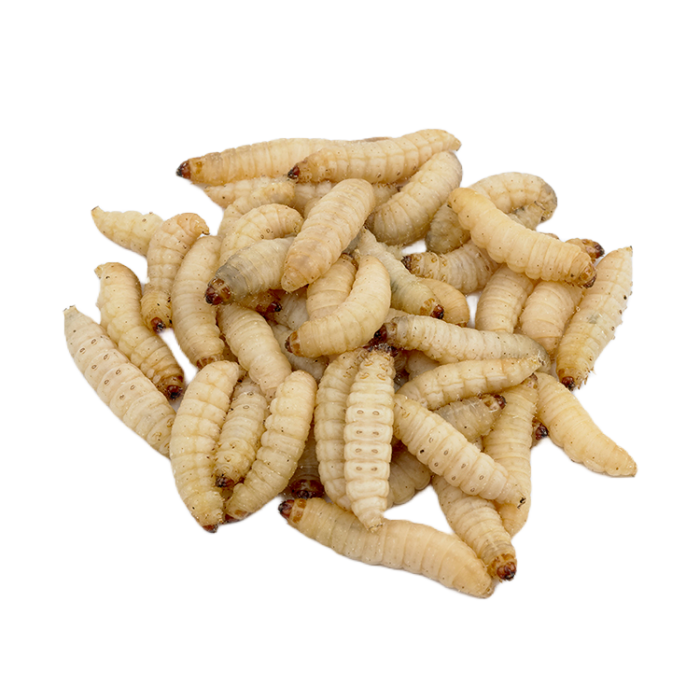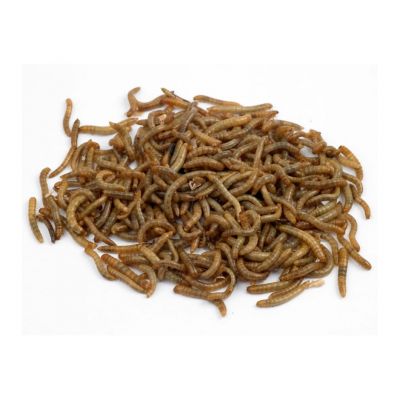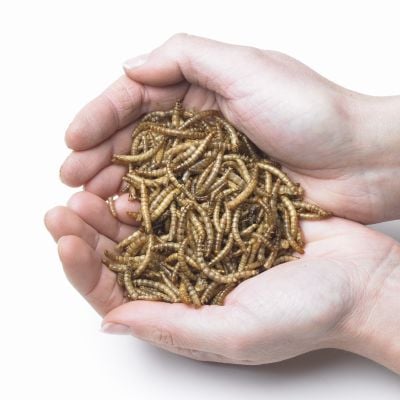Waxworms for wild birds are a high-energy food source. They have an extremely high protein and fat content and are a great energy source for during the nesting and fledgling season. Buy waxworms for birds to encourage ground-feeding and soft bill species into your garden. Orders for waxworms are sent directly from the supplier via Royal Mail to ensure longevity. Please allow four working days for orders to arrive.
Waxworms for Birds
1 tub is 75g with approx. 250 wax worms
Orders for waxworms are sent directly from the supplier via Royal Mail to ensure longevity. Please allow four working days for orders to arrive.
Orders received by 3pm Monday to Friday will be dispatched via DHL on a no signature delivery service; simply advise us where to leave your bags. We don't deliver on Saturdays, Sundays or Bank Holidays.
Some orders less than 1kg in weight will come by Royal Mail.
Orders for Live Mealworms are sent directly from our supplier via Royal Mail. They are dispatched the same day if orders are received by 12pm Mon-Thurs; no orders are dispatched on a Friday. Please allow four working days for orders to arrive.
If you have not received your order within seven working days please contact us on 01775 630208.
We now deliver to all of mainland UK with no extra delivery charge. Please note that some postcode areas that are classed as Scottish Islands and Highlands may take 2-3 working days to arrive. For deliveries outside of these areas a £10 charge will be applied. Postcode areas affected include HS, IV41 – IV49, IV51, IV55 and IV56, KA27 and KA28, KW15 to KW17, PA20, PA41 to PA49, PA60 to PA78, PH42 to PH44, ZE, Isle of Man
We are unable to deliver to the Republic of Ireland or the Channel Islands.
David Camp
Well packaged and in an easy to use container, a small number of waxworms were mixed with a larger number of live mealworms. All were taken readily by sparrows, robins and blackbirds.
30/06/2023Linda Wilkinson
I order waxworms quite frequently and they always come fresh and quick delivery vinehouse farm are brilliant for there service for there customers, A place that cares for the birds,
24/01/2022Linda Wilkinson
I order waxworms quite frequently and they always come fresh and quick delivery vinehouse farm are brilliant for there service for there customers, A place that cares for the birds,
24/01/2022Anonymous
They do n’t last long in the food dish.Some very happy young blackbirds.
28/05/2021Anonymous
I was new to waxworms: they arrived very much alive and well the day after ordering, and survived a fortnight in their wood-shaving box. I put them out a few a day, and the birds loved them. Handling them was fine - they're a bit wriggly but plump and easy enough to transfer to the feeder.
12/04/2021Jennie Muraszewski
The birds adore this product and the waxworms are devoured very quickly. Clearly succulent and healthy I put them on feeders specifically for the tit family. They’re gone very quickly. There are quite a lot provided by Vine House in good condition and good storage facilities. Can definitely recommend them
17/03/2021
Waxworms are the caterpillar larvae of the wax moth, which is part of the Pyralidae family of moths. The adult moths are sometimes referred to as ‘bee moths’. This name comes from the fact that wild populations are nest parasites that live in bee colonies where they eat gathered pollen and the shedded skin of bees. They will also chew through bees’ wax – which is also where the name ‘wax moth’ comes from.




